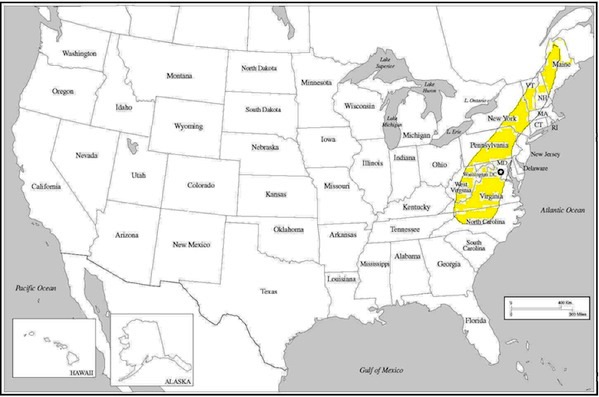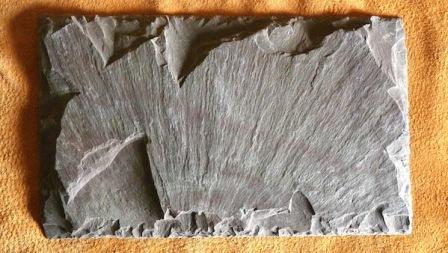Mastering Roof Inspections: Slate Roofs, Part 1
by Kenton Shepard and Nick Gromicko, CMI®
The purpose of the series “Mastering Roof Inspections” is to teach home inspectors, as well as insurance and roofing professionals, how to recognize proper and improper conditions while inspecting steep-slope, residential roofs. This series covers roof framing, roofing materials, the attic, and the conditions that affect the roofing materials and components, including wind and hail.
Properties of Slate

Slate Formation
Let's look at slate roof tiles, which you may hear called simply slates or tiles. Slate tiles are made from blocks of stone mined in quarries.

These conditions are typical of those that formed the Appalachian Mountains, so most slate quarries in North America are near the Appalachians in Pennsylvania, New York, Vermont, Maine, and the southeastern parts of Canada bordering those states. The Appalachian deposit is famous for producing high-quality slate.
Slate deposits are usually very large, underlying multiple states with quarries located in different parts of the deposit. Slate from different quarries, and from different layers in the same quarry, has unique characteristics. The differences in color, density and durability are the result of the differences in the mineral types and their proportions. In other words, the properties of slate are determined by its chemical makeup, and the different types and magnitudes of forces that acted upon the slate as it was being formed.
Color
One concern with slate is its color-fastness, which refers to the long-term stability of the slate's natural color. Slate is classified as fading or unfading, according to its color stability. The photos below show two types of unfading slate.

Unfading red slate

Slates designated as unfading will maintain their original color for many years.
Color permanence is not always an indication of slate durability, although the color can be an indicator because it helps determine the quarry where the slate originated.
Some colors are specific to certain regions, and others are found more widely. Here are some examples of slate colors from different quarries. These slates are samples. If they were actual roofing tiles, you’d see nail holes.

Royal purple

Unvariegated purple

Semi-weathering grey
Differences can be subtle, as you can see by comparing the unfading grey to the unfading green, and the mottled grey-black and the Vermont black. Although these slates may look very similar, they could have very different lifespans. It takes experience to identify slate by sight with confidence, and it’s often impossible to identify slate with laboratory testing.
Ribbon Slates
Slates that have dark bands of brown or red across their faces are called ribbon slates. There is some disagreement among contractors about whether ribbon slate has a shorter lifespan than other types or colors. The dark bands usually contain a higher percentage of carbon or unstable minerals that may weather more quickly than the rest of the tile.
Ribbon slates are usually used for interior applications. If you see them installed as roof tile, you should mention in your inspection report that the tiles installed appear to be ribbon slates, and that their use as roof tile is controversial. Explain the possibility that they may fail before similar, non-ribbon slate tiles.

The photo above shows ribbon slate from China. A lot of this type has been imported and is suitable only for indoor applications.
Density
**************************************************
Learn how to master a roof inspection from beginning to end by reading the entire InterNACHI series: Mastering Roof Inspections.
Take InterNACHI’s free, online Roofing Inspection Course
Mastering Roof Inspections
Roofing Underlayment Types
Inspecting Underlayment on Roofs
Fall-Arrest Systems
Roofing (consumer-targeted)
More inspection articles like this

